Our newly converted former Vestry "The Store" is situated right in the centre of Wick, with all amenities at your fingertips and the sea coast only a minutes walk away from the doorstep. Converted to a luxuriously high standard, retaining many of the original features yet boasting a modern spacious open plan living, kitchen, dining area to chill out and relax in. The property consists of 1 bedroom with a Kingsize bed, a sofabed (Double) WIFI soundsystem and large flatscreen TV's in both rooms.
The space
The Store is a self contained one bedroom property with a Kingsize bed, 2 bedsides, chest of drawers and 43" smart TV. The open plan living space has a fabric sofa and chair plus a luxurious Italian leather sofa with a double bed within, a dining set accommodating four people & 65" smart TV with all popular applications and a Bluetooth sound bar.
For those who like to game we’ve prepared power and hdmi inside the tv unit ready for your console. The Kitchen includes the usual fridge-freezer, dishwasher, microwave, induction hob, kettle & toaster with all utilities required.
Guest access
The key can be accessed from the key lockbox at the property. The lockbox security code will be sent on the day of check in with other information about the property.
The entire house will be yours to use with the addition of free doorstep parking.
HI-00149-F
Address: The Store, Shore Lane, Wick, KW1 4NT , , United Kingdom
Size: 65.0 m², 3 Rooms, 1 Bedroom, 1 Bathroom
Beds: 1 King size bed, 1 Sofa bed, 1 Couch
Prices: 150 GBP - 250 GBP / Night
More pricing information:
CLAN offer long and short stay packages which are available for our business/contract customers.
Whether you’re a team in need of a home away from home, or embarking on a long-term work assignment, our properties are designed to offer the utmost in comfort and convenience.
Fully serviced, fully invoiced offering an economical accommodation without compromising on comfort.
Further presenting a quality image for your brand and enhancing your company reputation.
Please contact the team directly to acquire a tailored quotation!
email: info@caithnessluxuryapartments.co.uk
Telephone: 01955606221
Contact us via: WhatsApp
Wick is a historic seaport town in the northeastern corner of Scotland and the largest town in Caithness after Thurso. The town name comes from the Viking word 'vic', meaning a bay, and the Vikings were the first to settle here at the mouth of the River Wick. This was once the busiest herring port in the world, though now the boats in the harbour are just as likely to be pleasure craft. Wick makes an outstanding centre for exploring Caithness and northern Scotland. It is but a short drive up the coast to John o' Groats and the ferry to Orkney.
History:
The history of Wick goes back before the arrival of the Vikings, as the presence of an Iron Age hill fort at Garrywhin shows. We know there was a settlement here by the 8th century, when the Irish missionary, St Fergus, arrived to Christianise the residents. Fergus is now the patron saint of Wick, and the annual Fergusmas Fair is named for him. The Viking settlement at the mouth of the River wick grew up on the north bank. It was part of the vast Norse empire that covered most of Caithness and the Orkneys and extended down the east coast of what is now Scotland. One remnant of the Viking period is the Castle of Old Wick, on the rugged clifftops south of the town. The castle was built sometime around 1160 by Earl Harald Maddadson of Caithness and Orkney. Its prominent position atop high cliffs meant that it was used by fishermen as a landmark for many years.
If you enjoy history, you'll be spoilt for a choice of attractions to explore, and if you enjoy spectacular scenery, you've come to the right place!
Wick Bay (0.1 miles) lies in a strategic position on the north east tip of the mainland, and is ideally placed as a destination or stop-over on your Scottish adventure. Our new marina opened in 2009 and has already proved an attraction for visiting sailors, being only a five minute stroll from the town centre with plenty of shopping and leisure opportunities and renowned Caithness hospitality. Local visitor attractions such as the award winning Wick Heritage Centre, and Pulteney Distillery, producing our finest single malt whisky, are all close by.
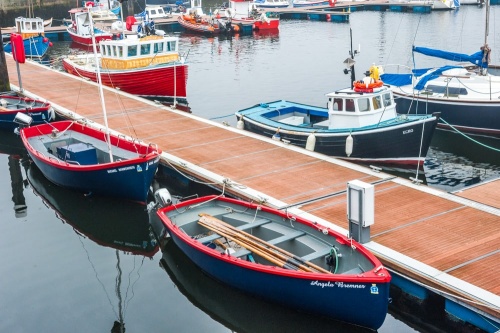
The Pulteney Distillery (0.5 miles) is the most northerly on the mainland, and continues to make malt whisky using traditional methods nearly two centuries after its opening. Since 1826 the Pulteney Distillery has crafted a Single Malt Scotch Whisky that is the very essence of its remarkable location. In the very far north of Scotland, by Wick's historic harbour, the quietly maturing spirit lies in hand-selected oak casks, slowly capturing the unique character of this stunning landscape with its long seafaring history. Old Pulteney is the embodiment of history, people and place: the Genuine Maritime Malt.
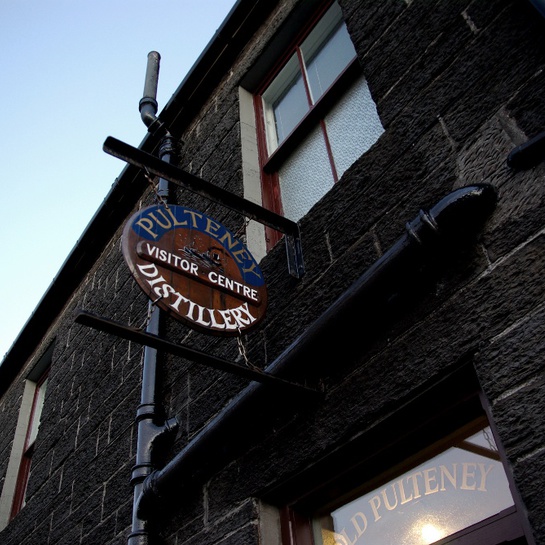
Wick Heritage Centre Museum (0.1 miles) You can learn about the rich history of Wick in the Wick Heritage Centre in Lower Pulteneytown. The Heritage Centre is, not surprisingly, an outstanding source of information on the herring fishery that brought prosperity to the town. Another highlight is the Johnston Collection of historic photographs, documenting the history of Wick for 112 years from 1863-1975.
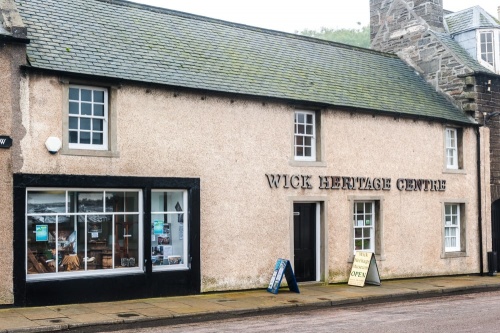
Ebenezer Place (0.1 miles) Wick is home to the world's shortest street, as verified by the Guinness Book of World Records. Ebenezer Place measures exactly 2.06 metres (6.76 feet) long, just enough for one doorway.
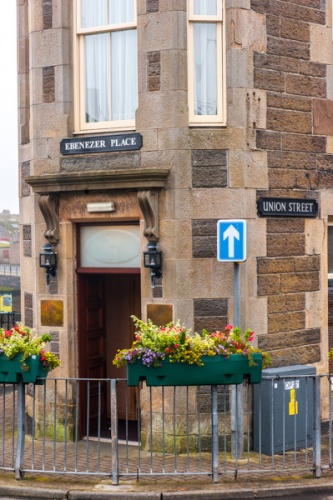
Memorial Garden (0.1 miles) On Bank Row, near the harbour is a memorial garden dedicated to 18 people who lost their lives in two air raids on Wick in the Second World War. On 1 July 1940, a lone German aircraft dropped two bombs on this area, in what is thought to be the first daylight bombing raid on mainland Britain. Fifteen people died that day, including 8 children. Fog Cannon On the edge of Wick harbour stands the old Fog Cannon. This cannon was installed in 1881 as a gift of Sir John Pender to the Pulteney Harbour Trust after several tragic events led to fishermen losing their lives in the fog. Pender, a native of West Dunbartonshire, represented Wick and Pulteneytown as a Member of Parliament for 17 years before his death in 1896.
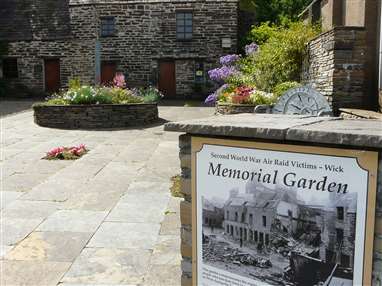
Yarrows Archaeological Trail Near Thrumster (5.9 miles) is a circular trail linking three Neolithic long cairns, two round chambered cairns, a hill fort, a standing stone, Bronze Age hut circles, and an Iron Age broch. Where else can you see such an incredible wealth of prehistoric sites in two short miles? Cairn o' Get And speaking of prehistoric remains, there is Cairn o' Get, a Neolithic burial cairn near Loch Watenan, located in a landscape of hut circles, two brochs, and a stone row.
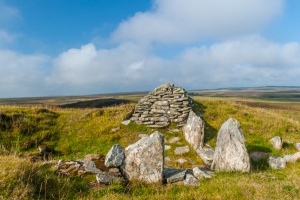
Castle of Old Wick (1.3 miles) Also locally known as the old man of Wick. On the cliffs just south of Wick stands the ruins of one of the earliest castles in Scotland. The castle stands on a rocky promontory, defended on the landward side by a ditch and on the other three sides by the sheer cliffs.
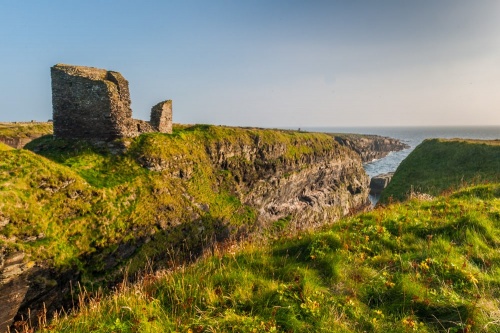
Castle Sinclair Girnigoe. (2.7 miles) Castle Sinclair Girnigoe The imposing ruins of this once-mighty castle cling to the rocky cliffs at the southeastern end of Sinclair's Bay, near Noss Head. The castle was probably begun in the late 14th century by the Sinclairs, Earls of Orkney and later to become the Earls of Caithness. Much of what we see today dates from the 15th and 16th centuries. In 1588 the castle was besieged by the Earl of Sutherland, but the defenders held out for 12 days before Sutherland gave up. Oliver Cromwell's soldiers made their base here in 1651 and left the castle in poor condition. What remains, however, is impressive. It is the only castle in the world to be listed by the World Monument Fund, as one of the 100 most endangered sites in the world.
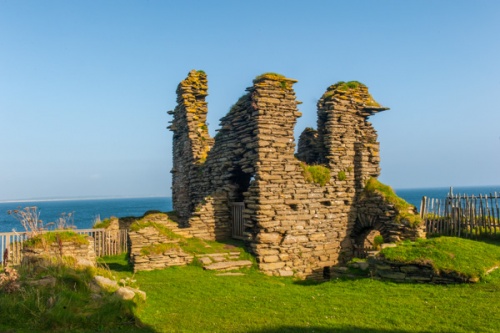
Whalligoe Steps (7 miles) At Whaligoe is a remarkable reminder of the heady days of the Wick herring fishery. Flights of incredibly steep stone steps have been carved into the solid rock of the cliffs to make a staircase down to a minuscule harbour. When Thomas Telford surveyed the narrow inlet at Whaligoe he dismissed it as unsuitable for herring boats. Captain David Brodie disagreed, and in 1793 he paid a local stonemason to carve over 300 steps into the cliff. Hardy visitors can descend the steps today, and marvel at the bravery of the fishermen and women who worked here.
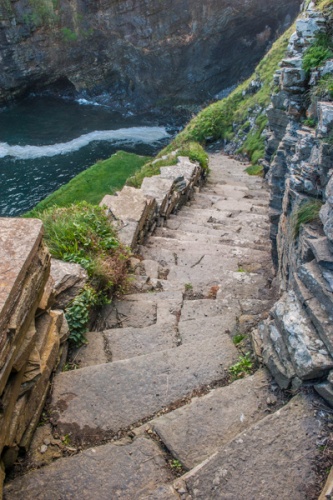
Keiss Castle (6.7 miles) Another picturesque ruin is Keissd Castle, a 16th-century tower house built by the Earl of Caithness at the northern end of Sinclair's Bay. The castle stands within the grounds of the 18th-century 'new' Keiss Castle, but can be reached via a public footpath along the cliffs from nearby Keiss village.
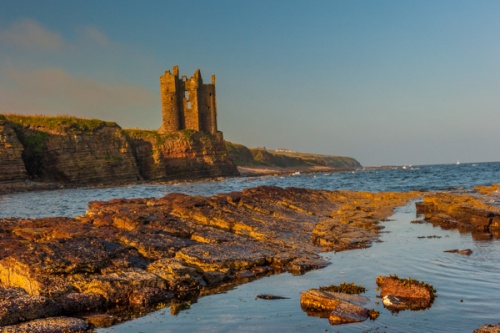
Castle of Mey, (20.2 miles) near John o' Groats, once owned by the Queen Mother. A lane near the John o' Groats post office leads to Duncansby Head, where a lighthouse designed by David Stevenson looks out over the Pentland Firth, a treacherous stretch of water once known as 'Hell's mouth' by mariners. A trail leads along the cliffs to spectacular sea stacks.
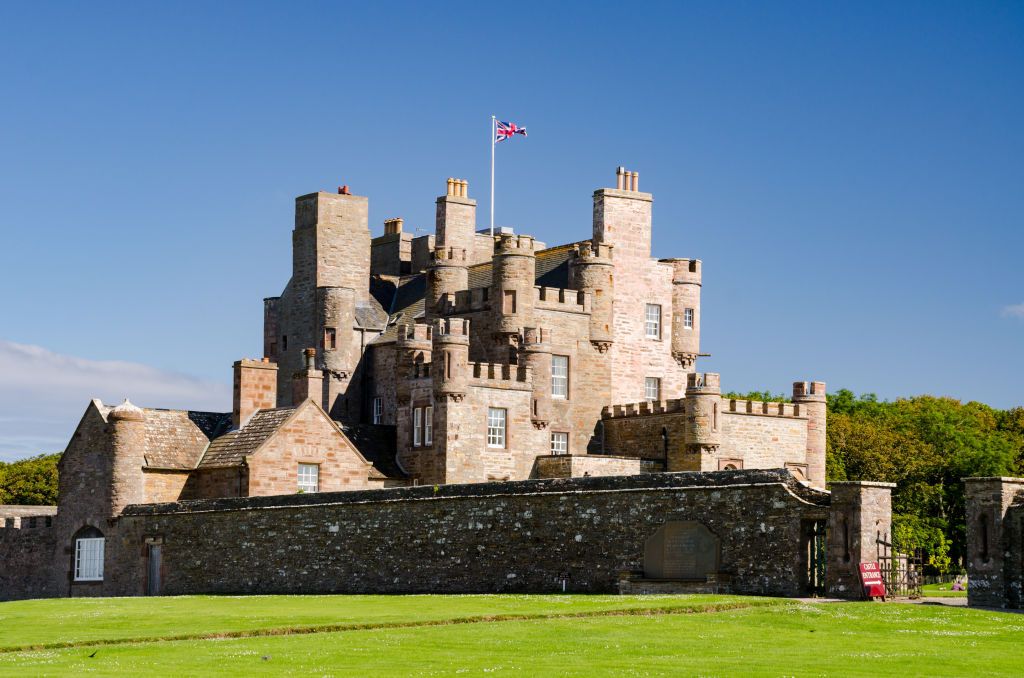
John O’Groats, (16.4 miles) From the amazing wildlife to the stunning scenery, John O’Groats and the amazing coast around it will take your breath away at every turn. Explore the village, walk the coast, discover the bays and beaches, or use it as a starting point for further adventures! While many see the village for its iconic ‘end of the road’ location, it’s part of an area rich in Scottish history, tradition and culture.
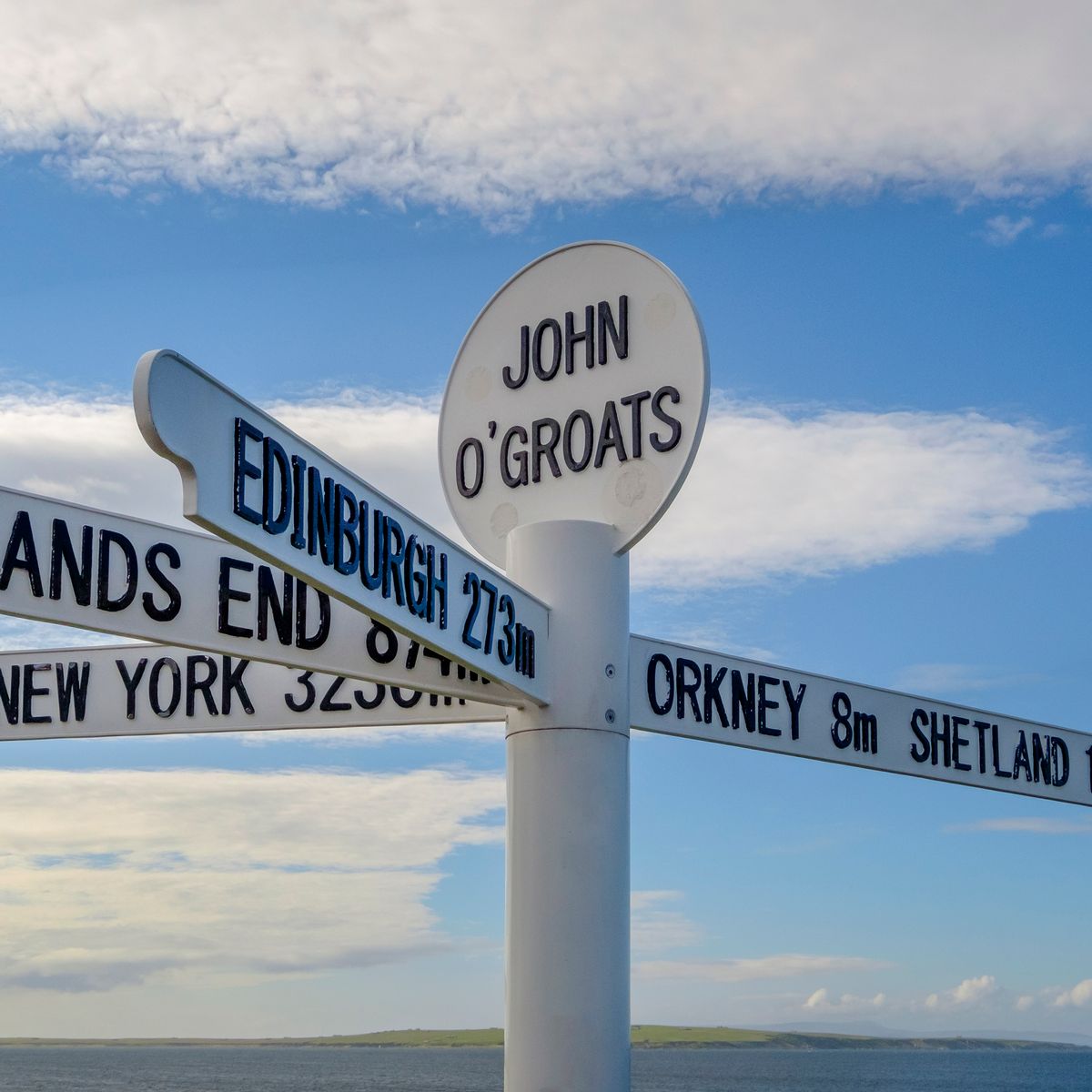
The Royal Burgh of Wick is the most northerly town on the East Coast of Caithness and is on the very popular North Coast 500 (NC500) route. The town offers multiple stores such as Tescos, Boots, Screwfix, Superdrug, Argos and B&M as well as a banking Hub and a post office. The property is within walking distance of all amenities.
There are many leisure opportunities including a popular golf course, squash club and public swimming pool/gymnasium.
The town also boasts an airport with links to Aberdeen and has good rail and coach services, as well as being close to ferry terminals with frequent daily services to Orkney.
Please use the link below for bus times and destinations.
https://bustimes.org/localities/wick-highland
Hugh's Taxi 01955 603 399
Miller Cabs Taxis And Private Hire Vehicles 01955 606 464